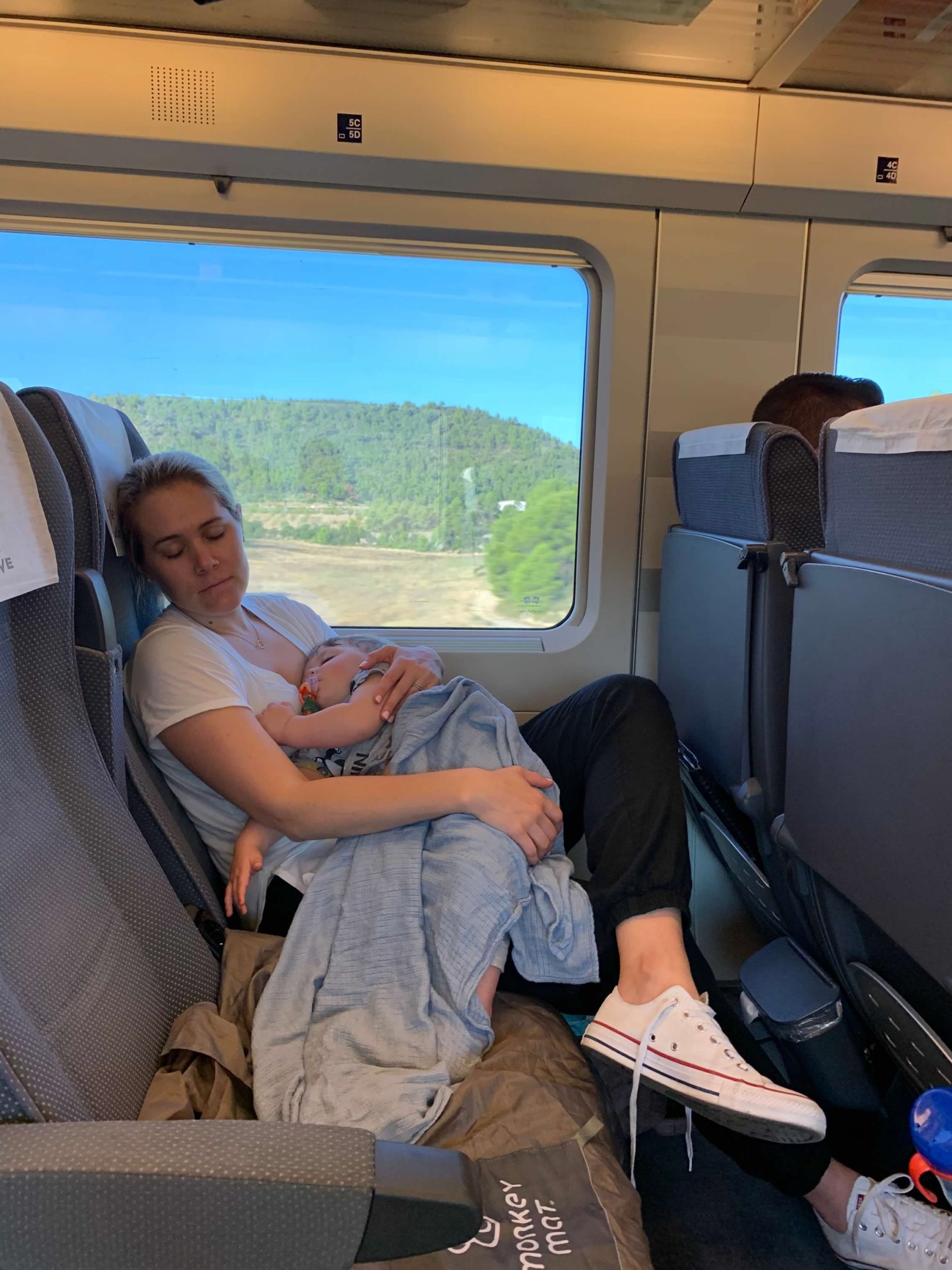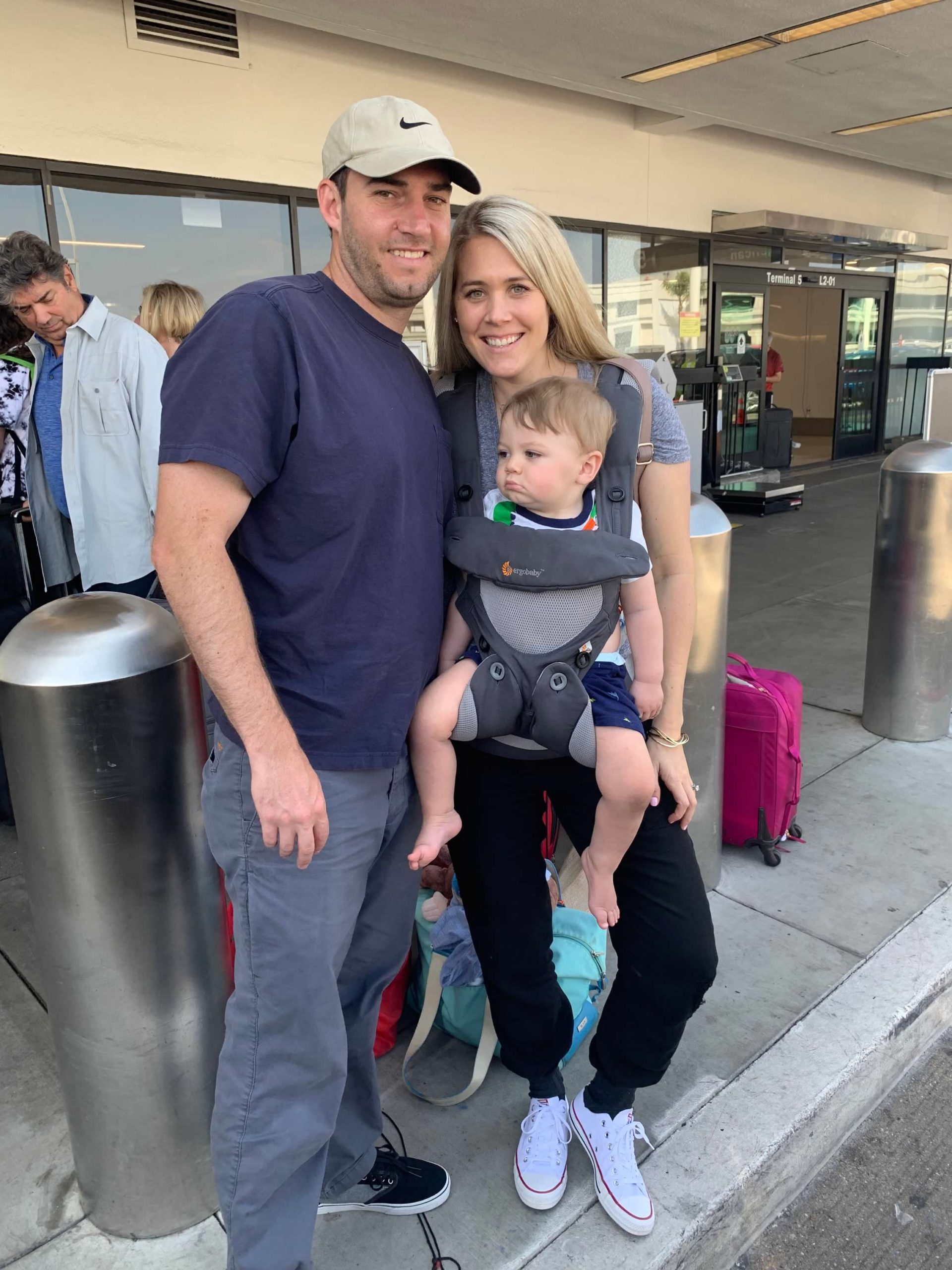When I first found out one of my dearest friends was getting married in Spain, I thought, what a perfect opportunity for my husband and I to see the country! Then, I quickly realized by the time of the wedding we would have a 14 month old in tow. After much thought and discussion, my husband and I decided that we would in fact go to the wedding as a family and turn it into our first European family vacation. Although it took more thought and planning than other trips and expectations were low, it turned out to be one of the best European vacations we’ve ever had!
Our Itinerary:
Our first decision was how to plan our itinerary. We wanted to hit up the major cities, we had to make it to the wedding, and I personally wanted some chill time by crystal clear waters. Our itinerary was Madrid, Barcelona, Seville, Mallorca (Deia and Cala Mesquida). If I were to do it again, I would have started in Barcelona but when you are buying 3 tickets to Europe cost does become a factor. And yes, flying through Madrid was that much cheaper. We also knew we needed to allow some extra time in each location because of Jacob (late morning starts, time adjustment, etc). We were supposed to have 3 days in Madrid (but missed our flight), but still had 3 days in Barcelona, 5 days in Seville (wedding location), 5 days in Mallorca split between Deia and Cala Mesquida and then an entire day of travel back to the states.
Transportation:


We found getting around Spain was so much easier than getting around the US. In fact, this is how we feel about most of Europe. Taxis with car seats are readily available and the metro, bus, and train systems in Europe are the best in the world. I personally don’t recommend bringing a car seat anywhere in Europe. We were able to easily get a taxi from the Madrid airport to our Airbnb and then the rest of the time we took public transport. We could have also easily taken public transportation from the airport to the airbnb but because of the long flight we opted to take a taxi. We took the train from Madrid to Barcelona and again from Barcelona to Seville. In each location we used the metro or the bus system. The metro system in Madrid and Barcelona is huge and even in Seville We flew over to Mallorca and from there rented a car with a car seat.
Accommodations:
If you’ve read my blog about Airbnb then you know why I love them, and if you haven’t you need to because it’s personally my favorite way to stay as a family. I scouted out the best family Airbnbs in each location. I made sure that each location had two bedrooms, a crib, a washer, and a kitchen. Why the two bedrooms? Because toddlers, unlike us, can’t be told to go back to sleep it’s the middle of the night, and also shouldn’t be given any sleep aid medicine. My husband and I took turns every other night sleeping with my son until he was sleeping through the night. By the 4th night he had slept from 11pm – 11am and we knew he was on a schedule. At that point, we could move him to his own room (like at home) and my husband and I could sleep together.
(Side note: Sometimes Airbnb gets a bad wrap because of the internet and how fast word spreads, but let’s not forget most people don’t rage about good experiences, unfortunately, it’s only the bad. Just read reviews, check ratings and be smart.)
Eating:
Finding food for Jacob in Spain was never an issue. In terms of grocery shopping for him, it felt just like the states. Every market we went into had milk and some sort of baby formula (HIPP Organic formula was the most popular), and pureed baby food and toddler pouches. At 13 months Jacob had now moved away from formula and onto whole milk which was even easier to find, but I was also shocked at how many little markets also carried baby formula and food. The only difference is that the milk is on the grocery shelves and not in the refrigerated section. This shocked me at first, but the quality of the milk was just as good, if not better (because of the stricter food regulations in Europe).
What to Bring:


You can see my blog post on what I specifically pack on any trip but here is what I do and do not suggest packing for Europe. I highly suggest investing in an Ergo 360 or some other baby wearing carrier. When Jacob was a baby, I baby wore a lot. I baby wore him all over Paris – I’m talking every nap was on me in the Ergo. Now that he is a little older and a lot bigger, I can no longer baby wear him for hours at a time, but it is still the only way to get through airport security, board the train, or quickly get to dinner. And since my husband was on this trip, he was able to help with the load. I would leave your bulky stroller at home but definitely invest in an light weight umbrella stroller. We love our Summer Infant 3D lite stroller. It has a great basket at the bottom, it has a shade that can expand to cover the whole stroller, and it lays flat for nap time. Why do I say leave your bulky one at home? Public Transportation, that’s why. Only major metro stops have elevators so the rest of the time you are lugging the baby, stroller, and diaper bag up and down the stairs. Bulky strollers just aren’t necessary. Everything is also smaller in Europe – cars, elevators, sidewalks. It’s just like anything else when you go on vacation, what you bring you carry. Also, when it comes to car seats, I’ve read that American ones aren’t legal in the EU. I need to do more research on this but I would do your research. And in my honest opinion, leave the bulky car seats at home. They are just more to lug around and with the incredible metro system throughout Europe you will be taking public transit or walking anyways. The only place we needed a car seat was in Mallorca and since we rented a car, we rented a car seat along with it. Maybe I should have titled this section what not to pack because the other thing I would leave behind is the pack n play. I always scout Airbnbs and hotels that offer cribs/pack-n-plays upon arrival. Rule of thumb – always – what you bring is what you carry!
Currency & Language
The main language is Spanish. Although, in most major cities you will find people who speak English, it would be beneficial to know a few words in Spanish to help you get by. I’m not sure if it was the locations or the places we went but I was surprised to find that less people spoke English in this large metropolitan city than I had anticipated. Google translate was also very beneficial – although things don’t always translate correctly. The currency is the Euro. Even though credit card is accepted in all grocery markets, and most restaurants, it’s important to keep cash on you in case of an emergency.
